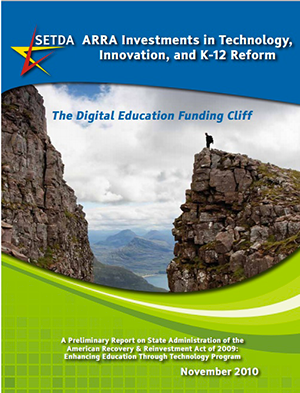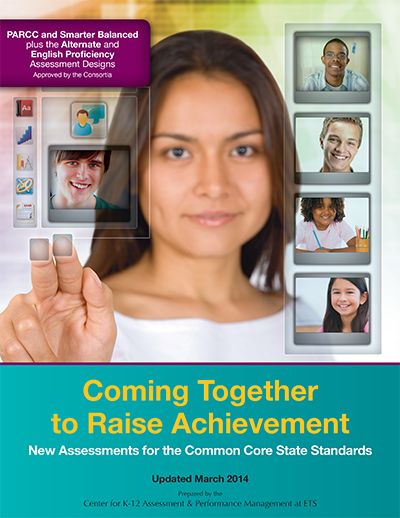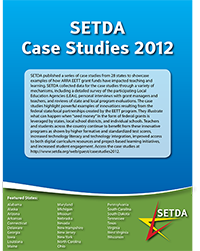
ARRA Investments in Technology, Innovation, and K-12 Reform: The Digital Education Funding Cliff
A Preliminary Report on State Administration of the American Recovery & Reinvestment Act of 2009: Enhancing Education Through Technology Program.

A Preliminary Report on State Administration of the American Recovery & Reinvestment Act of 2009: Enhancing Education Through Technology Program.

This report contains consortia-approved summaries of their ongoing work as well as articles about technology readiness, near-term challenges and future opportunities to enhance the power of these systems to support student readiness for college and careers. SETDA’s Doug Levin and Geoff Fletcher co-author an chapter titled “Crossing the Chasm to Digital Teaching, Learning and Assessment” (page 57).

Intellectual property law and policies are central to strategies for empowering and encouraging educators to realize the full potential of new digital content and tools. This policy brief addresses the key issue of ownership of teacher-created digital content and offers recommendations for states and districts to effectively manage the increased use of digital content.

As states and districts shift from print to digital content, education leaders must proactively consider the accessibility of digital content for all students, including students with disabilities. This issue brief provides recommendations for state and district policy regarding the development, use and distribution and sharing of digital tools to improve the learning experiences of all students.

SETDA published a series of case studies from 28 states to showcase examples of how ARRA EETT grant funds have impacted teaching and learning. SETDA collected data for the case studies through a variety of mechanisms, including a detailed survey of the participating Local Education Agencies (LEAs), personal interviews with grant managers and teachers, and reviews of state and local program evaluations. The case studies highlight powerful examples of innovations resulting from the federal state/local partnerships created by the EETT program. They illustrate what can happen when “seed money” in the form of federal grants is leveraged by states,local school districts, and individual schools. Teachers and students across the country continue to bene!t from these innovative programs as shown by higher formative and standardized test scores, increased technology literacy and technology integration, improved access to both digital curriculum resources and project-based learning initiatives,and increased student engagement.